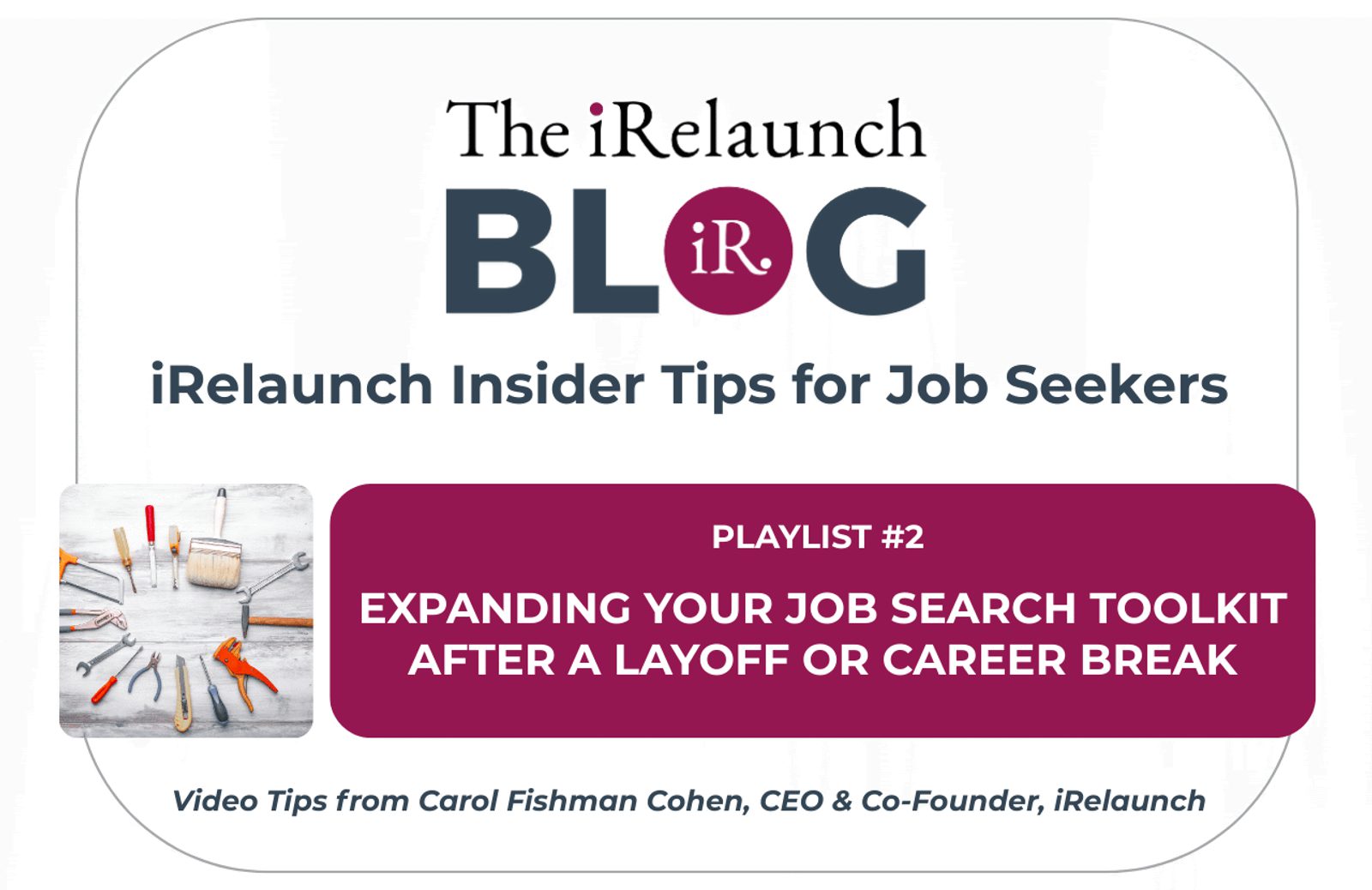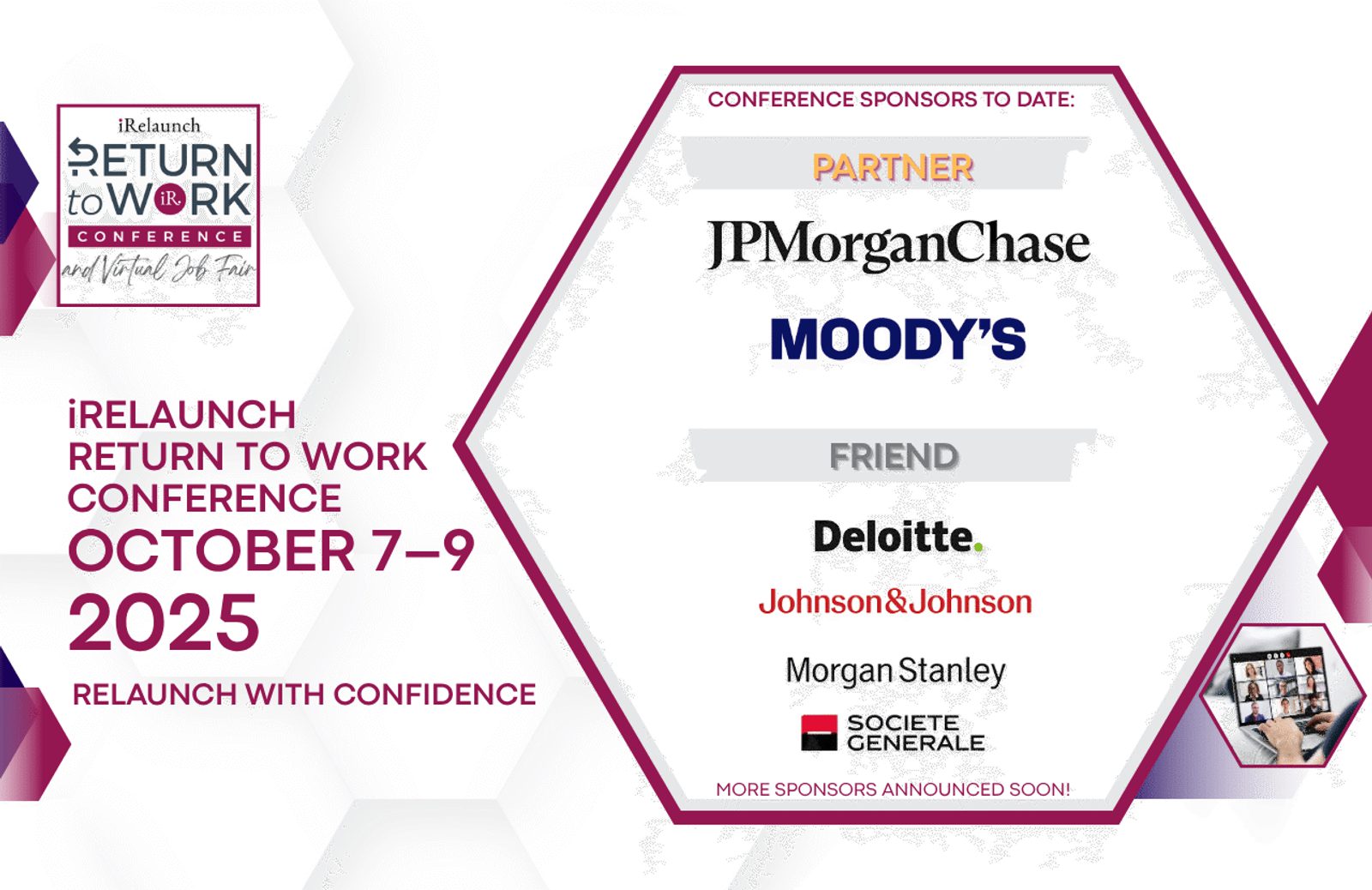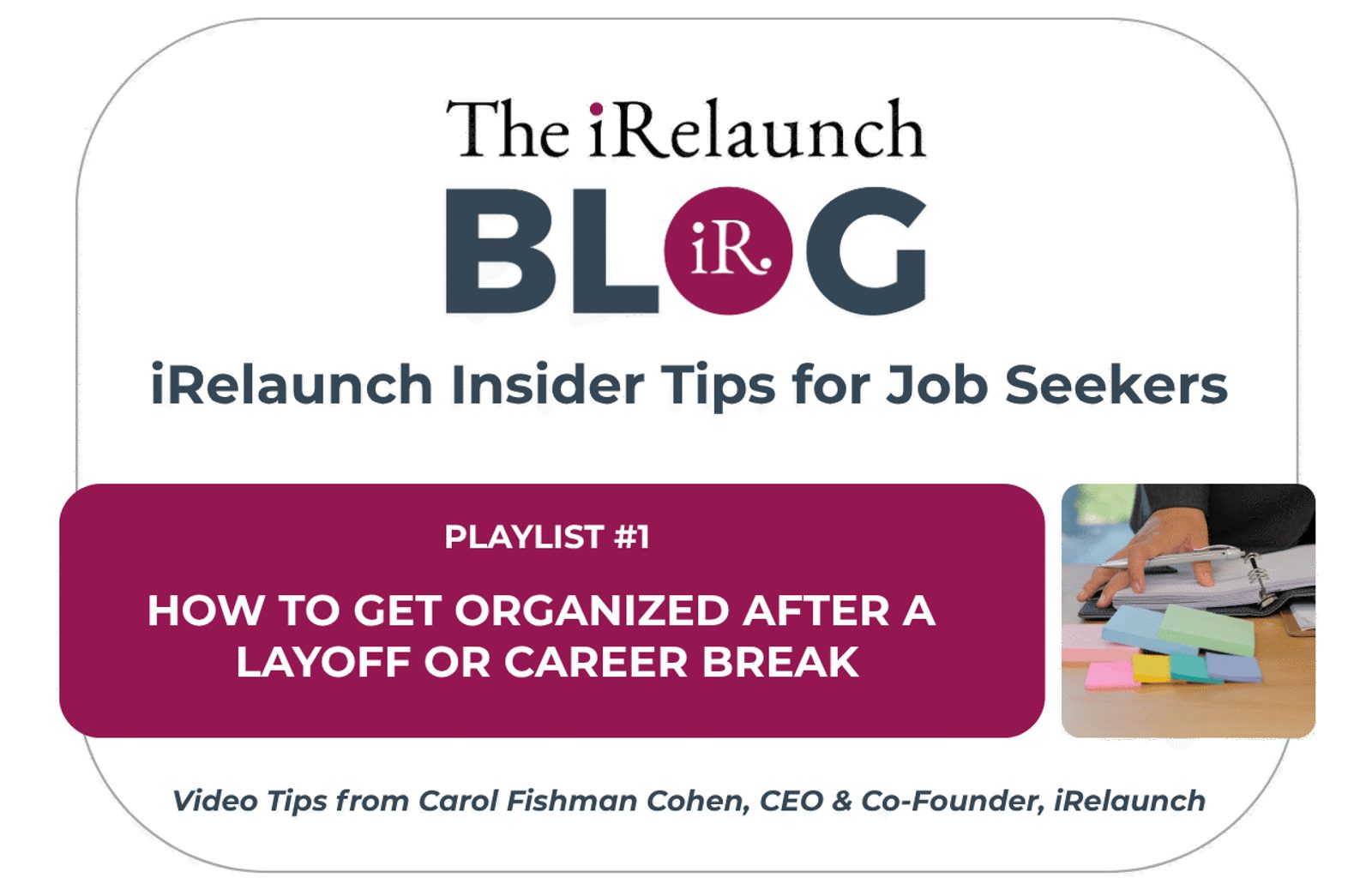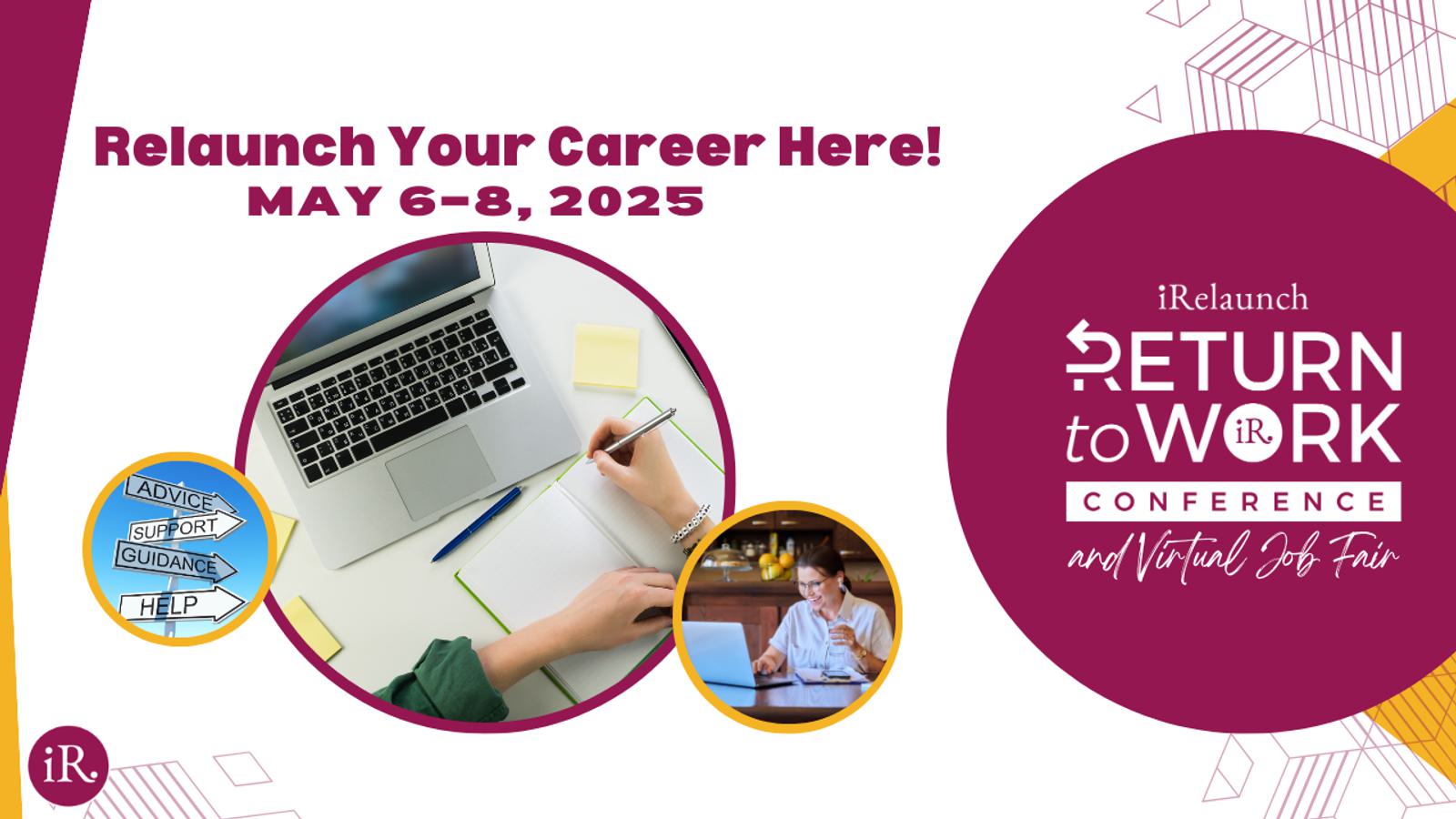Having worked as both an external and internal corporate recruiter, I’ve been asked to review a lot of friends’ resumes lately. While
there’s no one-size-fits-all solution, I believe the following guide
will help you both improve your current draft and avoid the worst resume
pitfalls. For those seeking to return to work after a
career break of three years or more, we highly recommend making contact
with a prospective employer first, either in person or through a mutual
connection, before forwarding your resume. Most relaunchers do not fare well using only online job boards and application systems.
1. Remember, most people spend only a few seconds looking at your resume
Therefore, you need to think of your resume as a billboard--
attracting interest and giving people a good sense of who you are and
what you can do, quickly. Your resume should resemble an executive summary of your career, not the full report. If you’ve only had a few jobs, one page should do it. If you’ve worked in a number of different positions, you might run to two.
And consider a third page only if you have academic publications to
list and use a lot of white space. There’s no greater turnoff than three
pages of densely-packed 8pt type. Finally, even though most managers will not read every word, make sure you’ve zapped any spelling or grammatical errors. Use both spell check and friends to proofread your way to perfection.
2. Looks matter
Spend some time experimenting with fonts, spacing, bolding,
underlining, italics, bullet points, boxes, shading, etc. to produce a
document that looks good. This is especially important if you’re in marketing, PR, any creative or design-oriented field and even sales. A resume is, in essence, your professional brochure. But don’t get crazy with the fonts and highlighting. Design elements should reinforce your message, not overpower it. A conservative typeface and judicious use of bolding will keep you from appearing gimmicky. And don’t forget to use a professional-sounding email address. [email protected] will not cut it.
3. Choose chronological over functional
Functional resumes make you look like you’ve got something to hide.
To highlight your transferable skills, use a Summary at the very top of
your resume (see #4 below). If you’ve been out of the workforce, start
the Experience section with your last paid position, even if it ended
years ago. If you’ve done an occasional consulting project during your
career break, some for pay and some for free, you can list Consultant at
the top of your Experience section and briefly describe your
engagements. Even if you’ve only taken on an occasional
project between, for example, 2015-present, you can describe yourself as
having been a consultant during that period. If
your primary activities during your career break have been
school-related or other volunteer work, you should put that in a
Community or Career Break Experience section after the Experience
section (see #6 below). The only exception to this is if you are
changing careers and your current career break experience is especially
relevant to this new career direction. Then you might want to lead with
it even though it was unpaid. Just note that it was pro bono so
recruiters don’t think you’re trying to imply that you were paid when
you were not.
4. Out with the Objective; in with the Summary
Most “objective” statements at the top of a resume are either too
vague or too high falutin’. They are wasted space. Instead, dedicate
that all-important top of the page real estate to a Summary statement.
To write an effective Summary, wait until you’ve completed the rest of
your resume. Afterwards, take a break for a day or two, reread your
resume, think about your personal qualities and then try to compose one
punchy little paragraph about yourself that will make employers just
dying to meet you. Trumpet the skills employers tend to covet, like
sales, cost cutting or project management. (If you’re not sure what
these are, read online ads in your field to see the skills and traits
that relevant employers value.) Mention all the industries in which
you’ve worked to indicate that you could be employed by a variety of
sectors. Finally, pull out key words in your field and list them
directly below your Summary paragraph. Here’s an example:
SAMPLE SUMMARY: Award-winning corporate marketing and public relations
executive with over twenty years experience in positions of increasing
responsibility. Demonstrated track record in sales and business
development. Superior project management and written and oral
communication skills. Industry expertise includes technology, consumer
products, chemicals, financial services, the environment, not-for-profit
and childcare. Results-oriented, self-motivated problem-solver and
creative thinker. >Media Relations > Public Relations >
Corporate Communications > Digital Marketing
5. Just the highlights, please!
In the Experience section, don’t feel you have to include every
responsibility you held at every job. Focus on your major
accomplishments, particularly those that match the kind of work you’re
currently seeking. And quantify your results whenever possible. If
you’re updating an old resume, don’t just add on your most recent work
experiences. Review your old job descriptions to make sure they employ
the vocabulary that recruiters use today to describe the jobs you’re
targeting. Absolutely do not cut and paste the job description you
received from your boss or HR onto your resume. Recruiters want to know
what you accomplished in your role, not just your responsibilities. So
instead of: “interfaces between sales and accounting to ensure accurate
billing,” write: “reduced billing errors by 10% by improving information
flow between sales and accounting.”
6. Include substantive volunteer or community work on your resume
Many people ask if they should include this sort of experience on
their resume. Absolutely. If you’ve been out of the workforce, it shows
that you’ve been building skills and getting things done, even if you
weren’t paid. Just be sure you describe your volunteer experiences in
business terms. For example: “Recruited and managed 20 volunteers to
design and execute PTA fundraiser. Event yielded a 25% increase in
donations over prior years.” If you’re seeking to return to the
workforce after a career break, you may want to call this section
“Community Leadership” or “Community Experience” to highlight that
you’ve been engaged in activity that will make you a better employee.
There is no need to use the word Volunteer, which calls attention to the
fact that you weren’t paid.
7. Don’t shy away from dates, but don’t get bold with them either
There are conflicting opinions about including graduation dates on
resumes. One thing that all agree on - always include the degree you
received, especially if you leave dates off, so the reader will know you
graduated. Also, make sure to include the years you worked at your
various jobs. But you don’t need to account for every month. In other
words, 1996-1998 is fine; 5/96-7/98 is overly specific. And there’s no
need to put dates in bold or otherwise call attention to them.
8. Take Inspiration from Others
If you haven’t seen a resume in awhile, look at these sample resumes just to
get some ideas. You can also access plenty of examples and templates
online. Just Google “resumes” and explore some of the sites that pop up.
Find a resume you like and imitate its format. A list of
power words for resumes can be found https://www.thebalancecareers..... Deploying a variety of
strong, active verbs in your resume will invigorate the document as well
as demonstrate your written communication skills.





